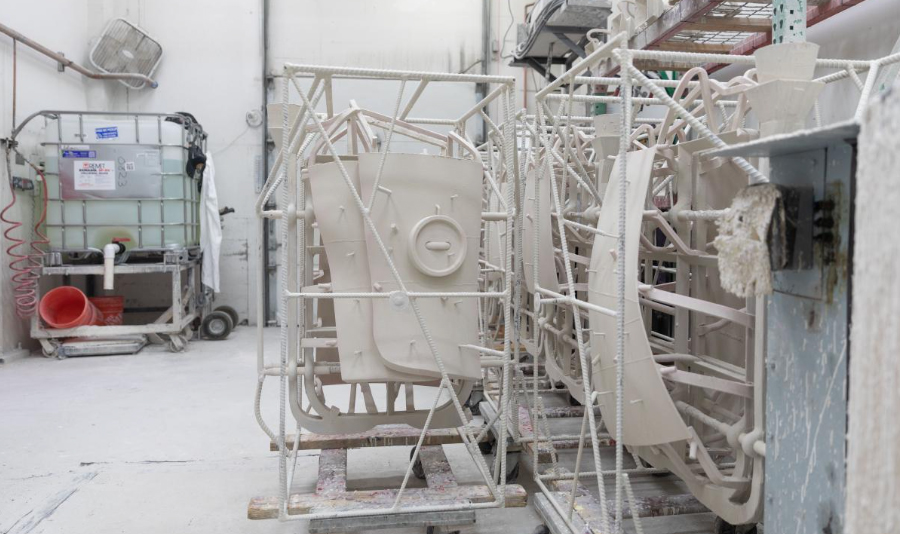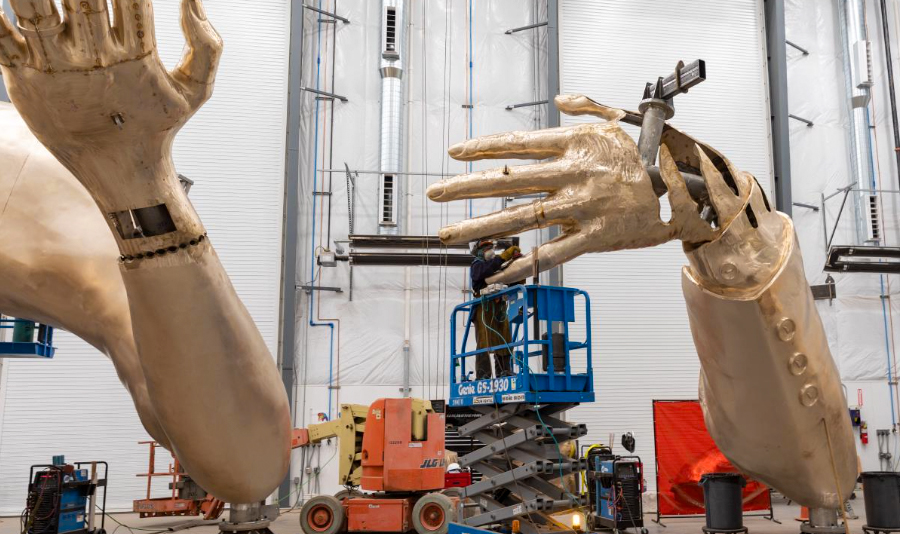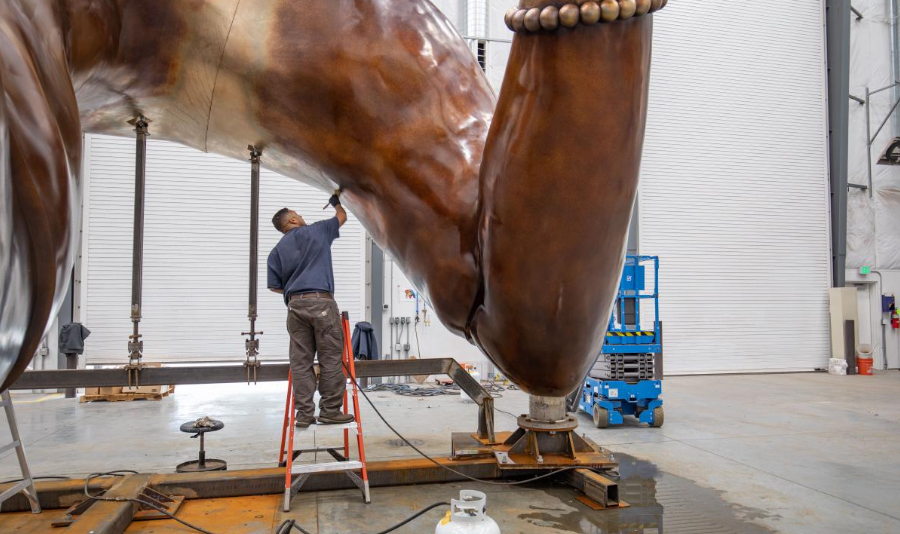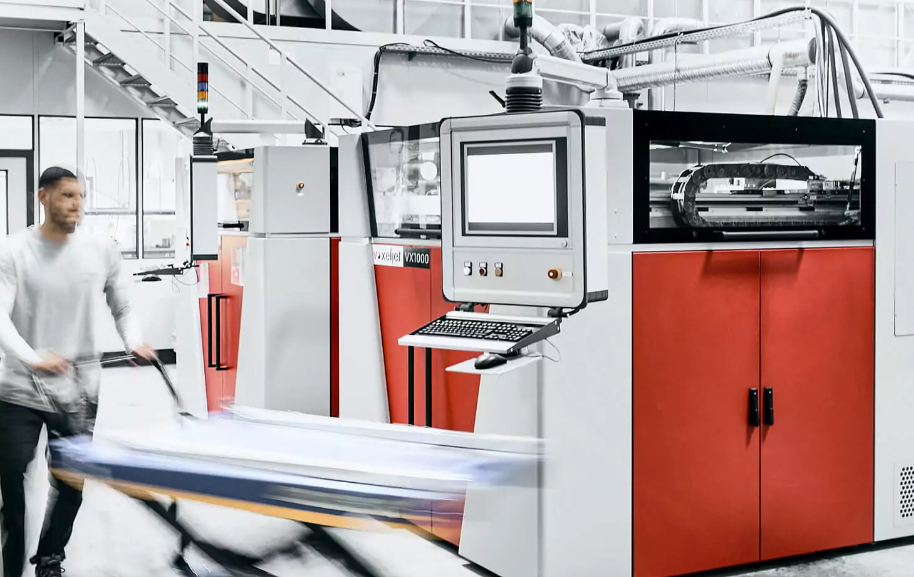After Hank Willis Thomas’ design for The Embrace, a public artwork in honor of Martin Luther King Jr. and his wife, Coretta Scott King, was selected from among 126 submissions by artists and architects, the work began to actually construct the statue.
Unlike conventional bronze sculptures, The Embrace was not sculpted out of clay or stone from which a mold is made, and the bronze is cast. Instead, The Embrace was a digital design inspired by a photograph depicting the Kings’ embrace in 1964 after having learned that Dr. King won the Nobel Peace Prize.
Although Thomas, a well-known conceptual artist, envisioned the monument’s design, it was up to a team of architects, engineers, and craftspeople to transform his computer model into the 6-meter-tall and nearly 8-meter-wide bronze landmark that now stands in the Boston Commons, the oldest public park in the US.

“The only way to construct a statue this size without having a full-size model is with 3D printing,” says Jonathan Follett, the president of Walla Walla Foundry, the fine art casting and fabrication company responsible for the statue’s construction. Walla Walla was established in 1980 with the sole purpose of facilitating the creation of contemporary art through bronze casting and fabrication.
Follett and his team began The Embrace construction by scaling up Thomas’ digital file to the desired size using Rhino software, and dividing it into pieces. Each of the 608 pieces was about the maximum size of the company’s Voxeljet VX1000 binder jet 3D printer. The print volume of the VX1000 (1,000 x 600 x 500 mm) could print five or six patterns at t time or 15 to 20 flatter patterns.

“We 3D printed every single part, the entire sculpture,” says Follett. Each piece was printed in a material called PMMA (Polymethyl methacrylate), which is commonly used to print industrial investment casting patterns. The pieces were then dipped repeatedly in a ceramic material. Then, once the ceramic shell is built and cured, it was heated to cleanly melt out the PMMA, leaving a void the exact shape and texture of the part into which molten bronze was poured.
A major benefits of 3D printed patterns is “that you can have an incredibly precise, uniform thickness across varying geometry and that translates to higher quality castings because your metals cools at the same rate,” says Follett.
Walla Walla Foundry has two VX1000 3D printers that ran nonstop to print the pieces but reached out to Voxeljet, which printed many of the pieces at its facility outside of Detroit. The statue pieces, or patterns, required nothing more than support removal and a light sanding before the ceramic dip.
Although Walla Walla Foundry has been 3D printing patterns for about five years, they are at the cutting edge of bronze sculpture work. Voxeljet 3D printers are used in industrial foundries but are not common in art circles.
“I think this industry surprised Voxeljet a little bit,” says Follett, “I don’t think that they made these printers thinking that the art world would utilize them.”

Walla Walla also used its Voxeljet to print a model of the entire statue for reference.
“(The statue) had to be fabricated here, fully assembled, and then had to come apart again to be shipped from our foundry in Washington State across the country to Boston,” says Follett. “So having that smaller 3D model was really beneficial just for having the whole crew understand the various parts, where the seam lines were, how it disassembles, and the complexity of handling each part.”
In total, construction, including the circular plaza designed and built by Mass Design Group, took two years. The $10 million statue was fully paid for by private donations.
Without 3D printing, the only way to fabricate the statue would have been to sculpt a full-scale model. For example, the Statue of Liberty was sculpted in full-size plaster pieces as a model for wooden pieces over which sheets of copper were hammered and tooled to create the statues’ skin. Rodin’s The Thinker was sculpted in full size in clay before a plaster mold was crafted over the clay into which the bronze was cast.

“I think artists are always going to sculpt originals, but there definitely is a large bunch of them who work digitally,” says Follett. The one downside to this method is that the first time the artist sees the work, it’s already fully cast and assembled. “So it’s really important that artists are comfortable working in a 3D modeling space.”
Overall, this method of scaling up digital files for 3D printing and casting vastly expands artists’ access to sculpture as a medium. With no need to physically sculpt anymore, there’s practically no limit to creative expression in large-scale bronze art.

License: The text of "Landmark Martin Luther King Jr. Bronze Statue Made Possible by 3D Printing" by All3DP Pro is licensed under a Creative Commons Attribution 4.0 International License.